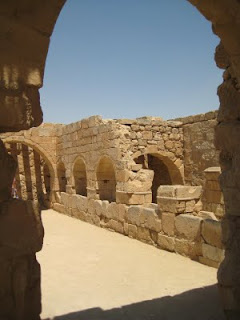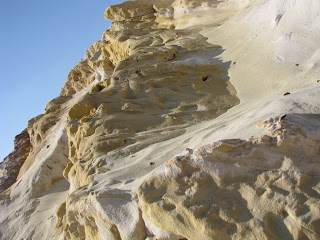
The uncovered aqueduct as seen from inside the covered aqueduct
The Roman aqueducts were highly advanced and are considered by some the greatest achievement of the ancient world. Built from a combination of stone, brick and an ancient cement, these structures brought fresh water to populations, reducing disease and improving life.
Some aqueducts ran below the surface; of the around 260 miles of aqueducts only 30 miles were visible above ground. The system used gradients, making sure the water continuously flowed down, allowing gravity to do its work. For the ancient world these structures were a tremendous engineering feat!
Because Israel was once part of the Roman Empire (Romans destroyed the Second Temple after revolts after all), it makes sense that they would invest in the area and place infrastructure there.
North of Caesarea the aqueducts are still visible today. There were two different lines from two different time periods. The large uncovered structure is older, and was later replaced by the covered structure.

The outside of the covered aqueducts
Here we have a clashing of time periods; aqueducts standing on both sides of a parking lot for the local beach. We had only 15 minutes to explore, and I choose to explore the covered aqueduct. The structure was close enough to the ground we were ale to climb in, and crawl through the covered area. The experience was unique and genuinely interesting.

Looking out of the aqueduct, some members of my group coming to explore

The earlier uncovered aqueduct


Both images of the inside of the aqueduct























